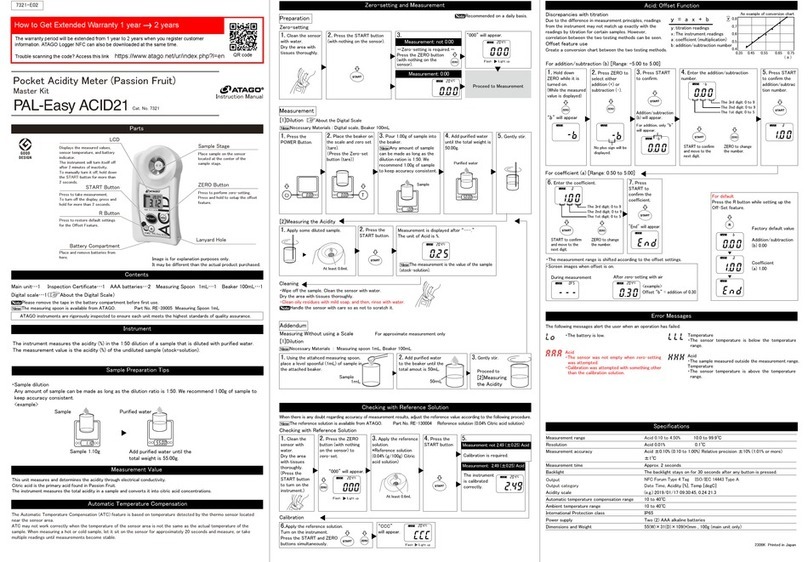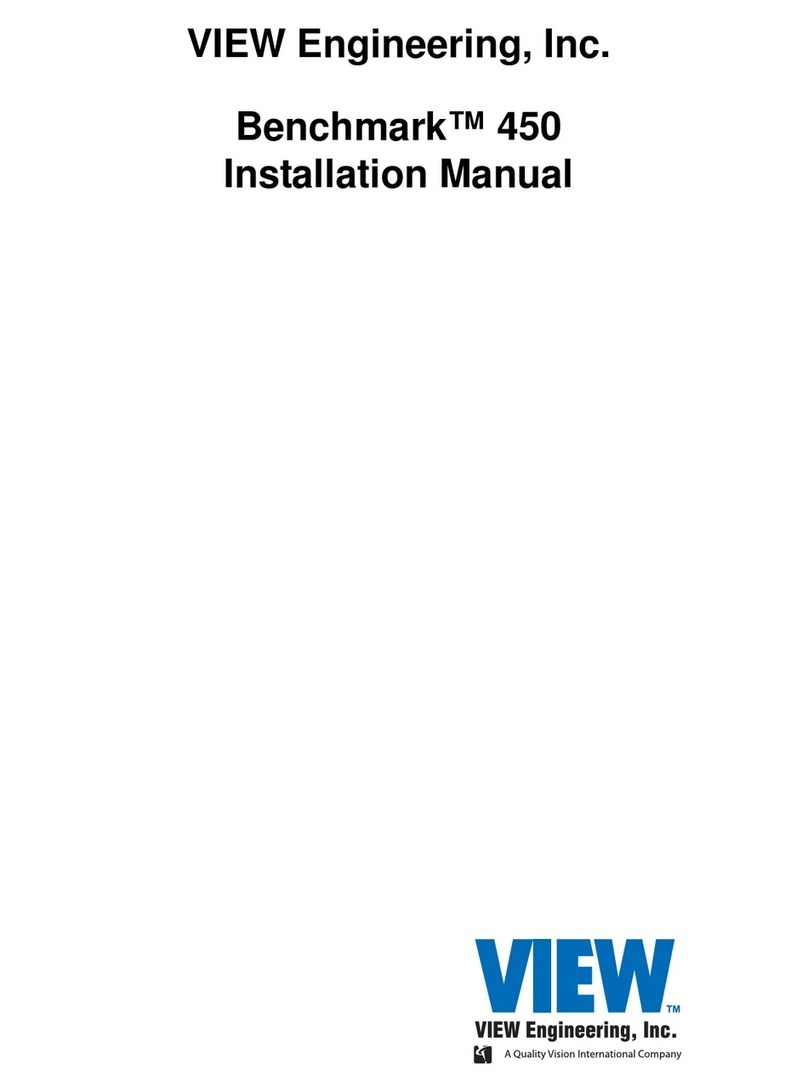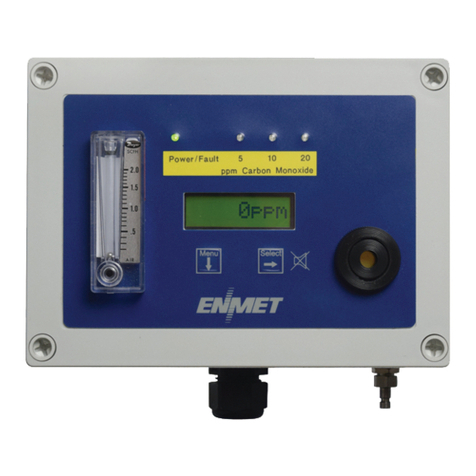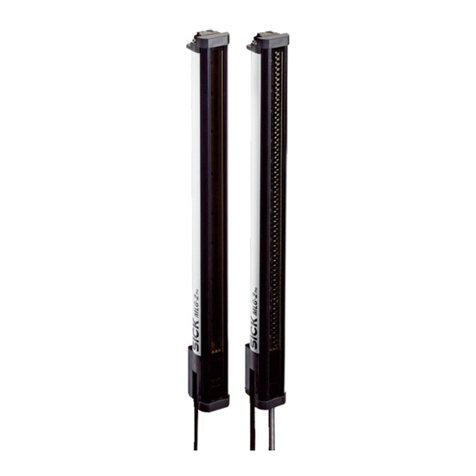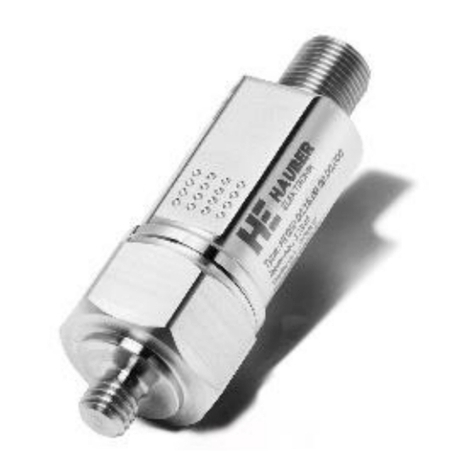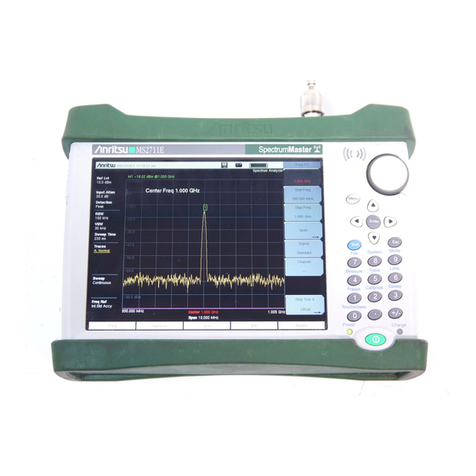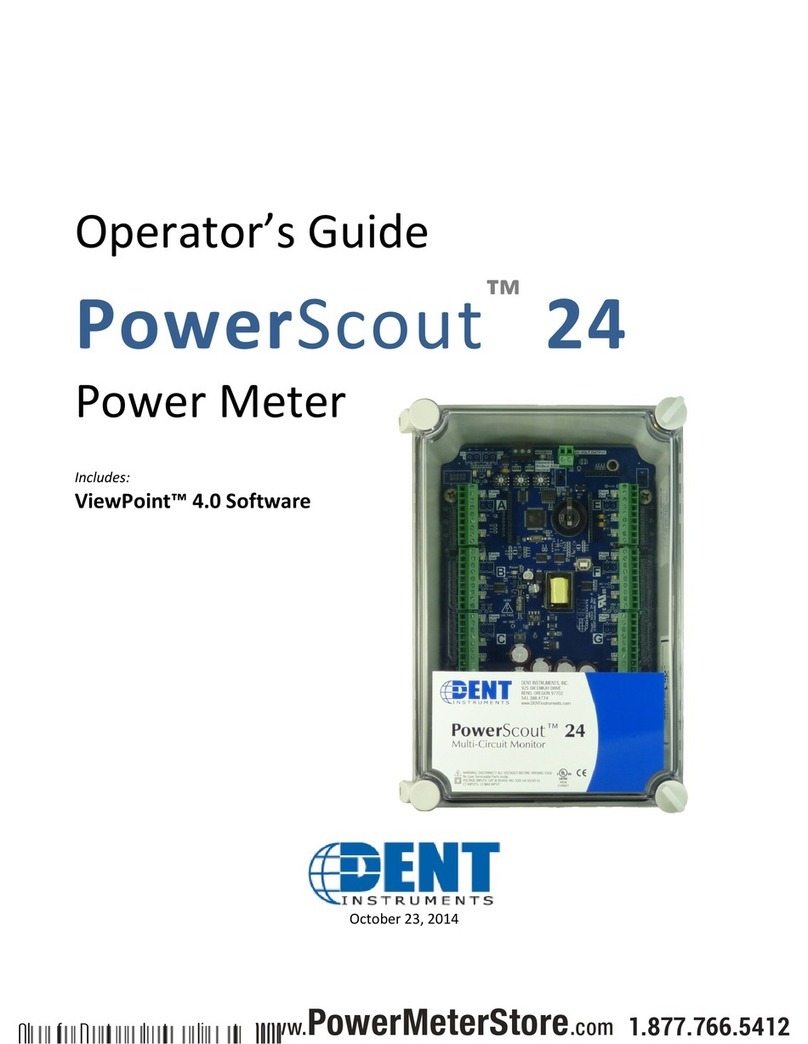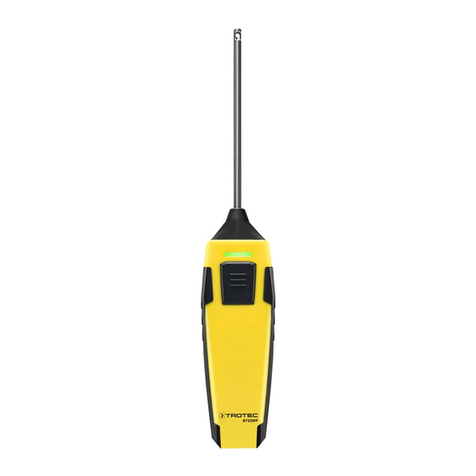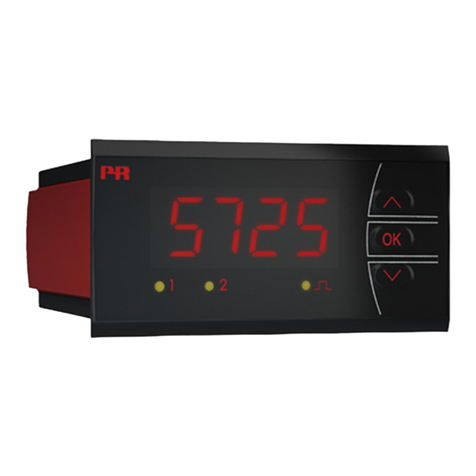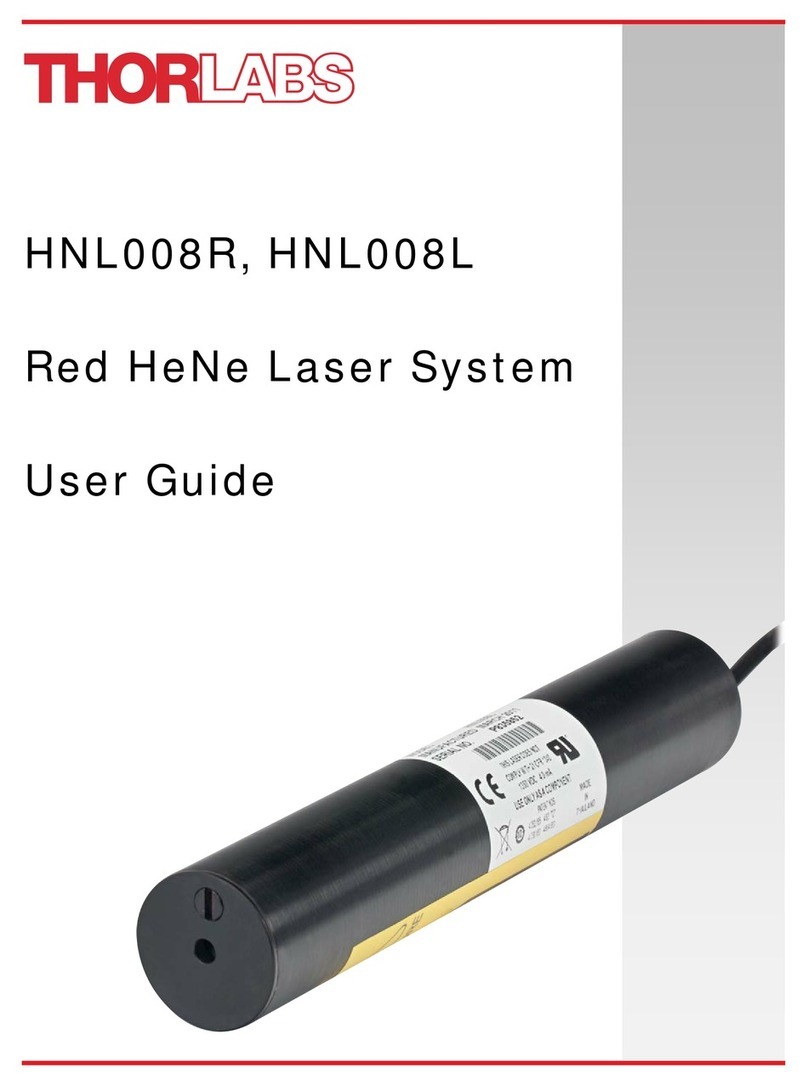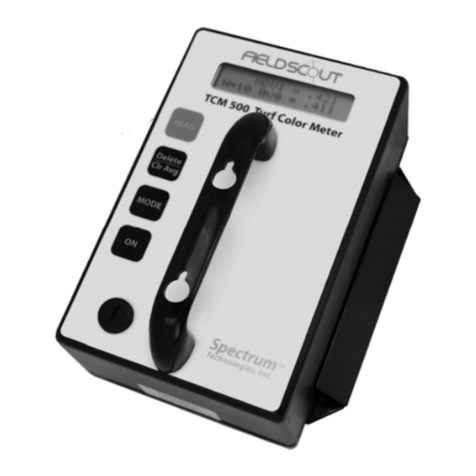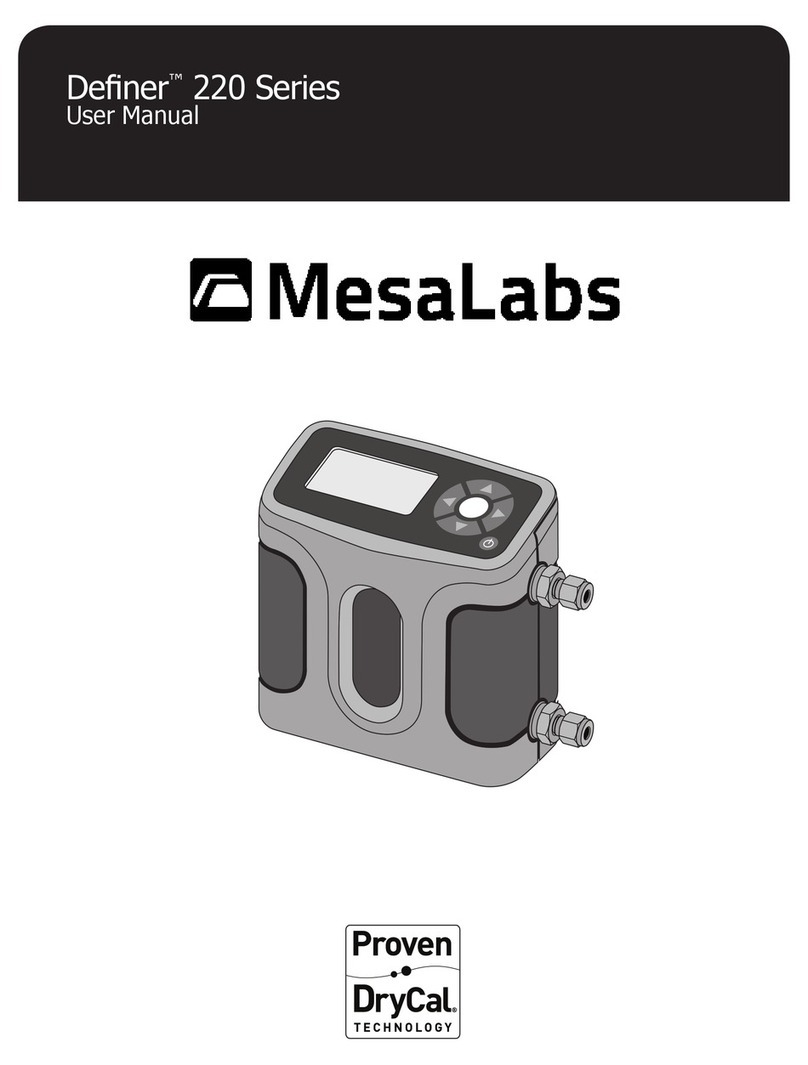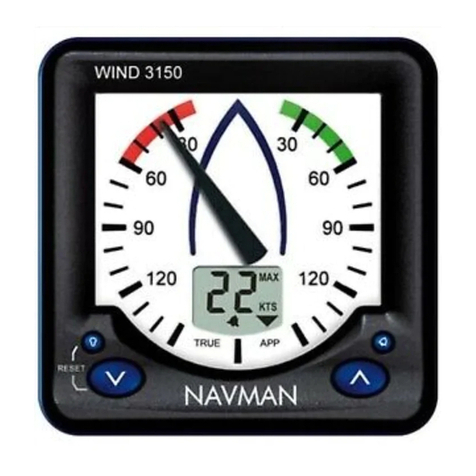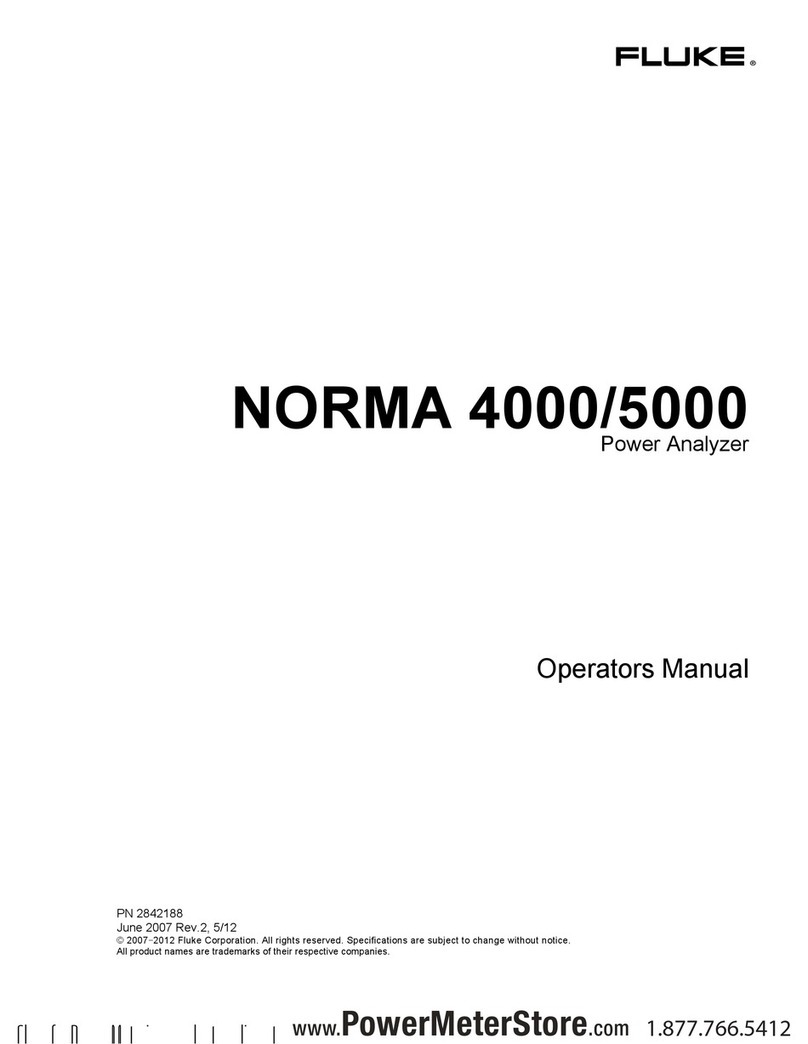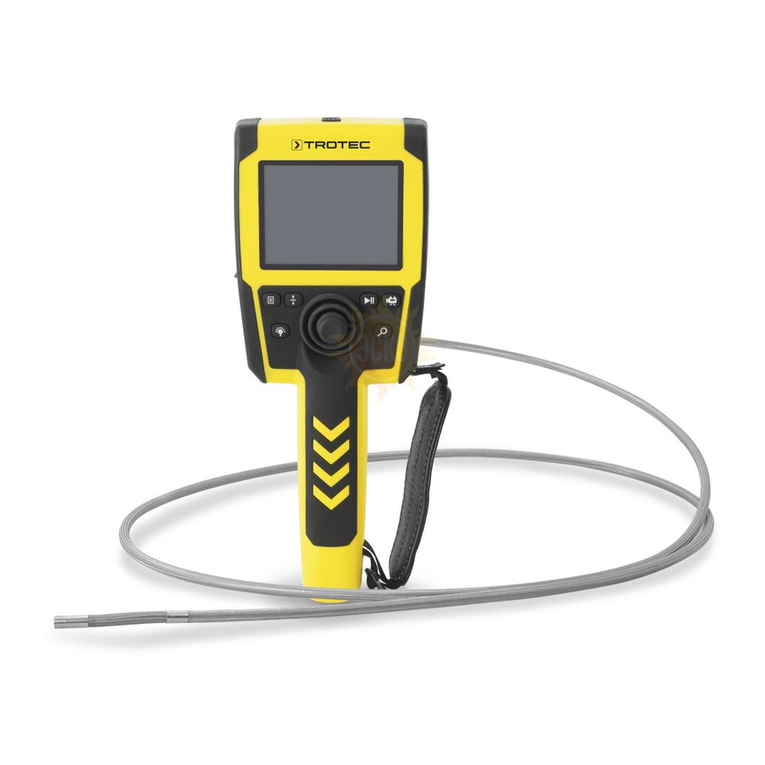GE Digital Energy Kelman MINITRANS User manual

GEDE-GA_M-DLIS-SE.MA-005 Rev 3.1 29-Sep-15
GE
Digital Energy
Kelman MINITRANS™
Installation Manual
Transformer Oil
Dissolved Gas and Moisture Monitor

Contents
1Introduction.................................................................................................................................... 6
1.1 Product Overview................................................................................................................... 6
1.2 Manual Scope......................................................................................................................... 6
2Safety.............................................................................................................................................. 7
2.1 Symbols .................................................................................................................................. 7
2.2 Warnings ................................................................................................................................ 7
3Requirements ................................................................................................................................. 9
3.1 Pre-installation ....................................................................................................................... 9
3.2 Handling & Storage................................................................................................................ 9
4Technical Specification ................................................................................................................10
5Design Criteria..............................................................................................................................11
6Transformer Criteria..................................................................................................................... 12
7Mounting.......................................................................................................................................13
7.1 Mounting Stand Installation ................................................................................................14
7.1.1 Mounting the Product to the Stand.............................................................................15
7.2 Direct Mount Cradle .............................................................................................................16
7.2.1 Locking mechanism.....................................................................................................16
7.3 Sun Canopy ..........................................................................................................................17
8Plumbing.......................................................................................................................................18
8.1 Transformer Valves..............................................................................................................19
8.1.1 Fill Valve........................................................................................................................ 19
8.1.2 Drain Valve ................................................................................................................... 19
8.1.3 Ancillary Valves ............................................................................................................19
8.1.4 Cooling Loop Valves..................................................................................................... 20
8.2 Supply & Return Valves........................................................................................................ 20
8.2.1 Oil Supply...................................................................................................................... 20
8.2.2 Oil Return ......................................................................................................................21
8.3 Tubing ...................................................................................................................................21
8.3.1 Fitting Requirements.................................................................................................... 23
8.3.2 Fitting Instructions .......................................................................................................24
8.3.3 Connection to Oil Supply Valve....................................................................................24
8.3.4 Connection to Oil Return Valve....................................................................................25
9Power............................................................................................................................................28

9.1 Connections..........................................................................................................................28
9.2 Battery ..................................................................................................................................30
10 Electronics ................................................................................................................................32
10.1 Input Board...........................................................................................................................32
10.2 Alarm Connections...............................................................................................................32
10.3 Accessory Power..................................................................................................................33
10.4 External Sensors...................................................................................................................33
11 Communications......................................................................................................................34
Installation Tools and Supplies....................................................................................35Appendix A
Customer Checklist ...................................................................................................... 36Appendix B
Installation Record ....................................................................................................... 37Appendix C
Tubing Specification and Ordering Details .................................................................41Appendix D
Product Dimensions.....................................................................................................44Appendix E
Mounting Stand Dimensions .......................................................................................45Appendix F
Footprint Dimensions...................................................................................................46Appendix G
Sun Canopy Dimensions.............................................................................................. 47Appendix H
Input Board...................................................................................................................49Appendix I
Heat Trace Cable..........................................................................................................52Appendix J
Direct Mount Cradle Vibration Levels..........................................................................53Appendix K
Direct Mount Cradle Installation.................................................................................. 55
Appendix L
Direct Mount Cradle Locking Mechanism...................................................................67Appendix M
Contact & Copyright Details ................................................................................................................85
Table of Figures
Figure 7—1: The product mounted on a stand...................................................................................15
Figure 7—2: Direct mount cradle......................................................................................................... 16
Figure 7—3: Cradle-mount sun canopy ..............................................................................................17
Figure 8—1: Schematic representation of an installation.................................................................. 18
Figure 8—2: Examples of possible line configurations (three of many).............................................18
Figure 8—3: Possible valve locations of a transformer ......................................................................19
Figure 8—4: Product connections - bottom view ............................................................................... 23
Figure 8—5: Fitting body and tubing................................................................................................... 24
Figure 8—6: Nut at 6 o'clock position..................................................................................................24
Figure 8—7: Nut at 9 o'clock position..................................................................................................24
Figure 8—8: Bleed assembly on flange-type oil return valve.............................................................25
Figure 8—9: Flange example ...............................................................................................................26

Figure 8—10: Return Assembly kit....................................................................................................... 26
Figure 8—11: Bleed assembly on threaded-type oil return valve......................................................27
Figure 9—1: Bottom plate connections............................................................................................... 29
Figure 9—2: Mains fuse holders with fuses (front - inside)................................................................. 29
Figure 9—3: Mains fuse holders with terminal connections (top - outside) ......................................29
Figure 9—4: Earth terminal on bottom of enclosure ..........................................................................30
Figure 9—5: Coin cell battery............................................................................................................... 30
Figure 10—1: Accessory power points for 12 V and 24 V ..................................................................33
Figure E—1: Front and side dimensions..............................................................................................44
Figure E—2: Base dimensions..............................................................................................................44
Figure F—1: Front and side dimensions with stand ...........................................................................45
Figure G—1: Footprint dimensions ......................................................................................................46
Figure H—1: Mounting-stand canopy front dimensions.................................................................... 47
Figure H—2: Mounting-stand canopy side dimensions .....................................................................47
Figure H—3: Cradle-mount canopy front dimensions........................................................................48
Figure H—4: Cradle-mount canopy side dimensions......................................................................... 48
Figure I—1: Input board .......................................................................................................................49
Figure I—2: RS-232 & RS-485 connections .........................................................................................51
Figure K—1: Product vibration limits ................................................................................................... 54
Figure L—1: Direct mount cradle.........................................................................................................55
Figure L—2: Clearance requirements..................................................................................................56
Figure L—3: Foam skid......................................................................................................................... 58
Figure L—4: Product positioned on the foam skid.............................................................................. 58
Figure L—5: Bracket tools and fittings ................................................................................................ 59
Figure L—6: Attach bracket fittings to the product ............................................................................59
Figure L—7: Tighten the fittings........................................................................................................... 60
Figure L—8: Top isolators tools and fittings........................................................................................60
Figure L—9: Fitting the support bracket.............................................................................................. 61
Figure L—10: Support bracket with top isolators fitted...................................................................... 61
Figure L—11: Mounting slot dimensions .............................................................................................61
Figure L—12: Bottom isolators tools and fittings................................................................................ 62
Figure L—13: The product positioned over the isolators.................................................................... 62
Figure L—14: Isolator with O ring ........................................................................................................63
Figure L—15: Attach fittings to isolators ............................................................................................. 64
Figure L—16: Failsafe tools and fittings ..............................................................................................64
Figure L—17: Fitting the failsafe mechanism......................................................................................65
Figure L—18: Misalignment and skew distance ................................................................................. 66
Figure L—19: Isolators used in compression and compression distance ......................................... 66
Figure M—1: Isolator ............................................................................................................................68
Figure M—2: Misalignment and skew distance ..................................................................................68
Figure M—3: Isolators used in compression and compression distance.......................................... 69
Figure M—4: Product LCD and Power Switch .....................................................................................70
Figure M—5: Tools & fittings ................................................................................................................ 71
Figure M—6: Top isolators with fittings & failsafe items removed.....................................................71
Figure M—7: Locking Piece Top ...........................................................................................................72

Figure M—8: Locking piece with fittings (left) ¦¦ tightened with a nut spinner (right) ........................ 72
Figure M—9: Bottom isolators with partially unscrewed fittings....................................................... 73
Figure M—10: Isolator with fittings (left) ¦¦ tightened with spanner (right)......................................... 73
Figure M—11: Clockwise: Isolators with fittings ¦¦ back fittings tightened with spanner ¦¦ front
fittings tightened with nut spinner............................................................................... 74
Figure M—12: Tools & fittings ..............................................................................................................75
Figure M—13: Inner panel.................................................................................................................... 75
Figure M—14: Rear view of LCD display board with cable attached.................................................75
Figure M—15: Fitting PGA locks ........................................................................................................... 76
Figure M—16: Reconnect LCD display board cable............................................................................ 77
Figure M—17: Inner panel.................................................................................................................... 77
Figure M—18: Loosen isolator front nut with nut spinner................................................................. 78
Figure M—19: Loosen isolator rear outer nut with spanner .............................................................. 78
Figure M—20: Bottom isolator with fittings removed.........................................................................78
Figure M—21: Unscrew the failsafe bolt .............................................................................................79
Figure M—22: Loosen the isolator M6 nut using a nut spinner .........................................................79
Figure M—23: Inverted top locking piece............................................................................................80
Figure M—24: Bottom locking piece.................................................................................................... 80
Figure M—25: Surplus nuts & washers stored securely on bracket bolts .........................................80
Figure M—26: Inner panel.................................................................................................................... 81
Figure M—27: Rear view of LCD display board with cable attached.................................................82
Figure M—28: Slide out PGA lock.........................................................................................................82
Figure M—29: Threaded inserts........................................................................................................... 83
Figure M—30: Stored PGA locks...........................................................................................................83
Figure M—31: PGA locks secured using Allen key ..............................................................................83
Figure M—32: Reconnect LCD board cable ........................................................................................84
Figure M—33: Inner panel.................................................................................................................... 84
List of Tables
Table 4—1: Technical specification .....................................................................................................10
Table 5—1: Type tests ..........................................................................................................................11
Table 11—1: Product communications channels............................................................................... 34
Table I—1: List of terminals..................................................................................................................50
Table L—1: MINI DM-Cradle retrofit kit —KITT00071 .........................................................................57
Table L—2: Bracket tools and fittings.................................................................................................. 59
Table L—3: Top isolators tools and fittings .........................................................................................60
Table L—4: Bottom isolators tools and fittings ................................................................................... 62
Table L—5: Failsafe tools and fittings.................................................................................................. 64
Table M—1: Tools & fittings.................................................................................................................. 71
Table M—2: Tools & fittings.................................................................................................................. 75

MA-005 - MINITRANS Installation Manual - Rev 3.1 29-Sep-15 Page 6 of 85
1INTRODUCTION
1.1 Product Overview
The MINITRANS™(herein referred to as the product) is an on-line DGA (Dissolved Gas
Analysis) system for transformer diagnostics. The product measures the following key
fault gases in transformer oil: hydrogen, carbon monoxide and acetylene as well as
moisture in the oil and the transformer load current. Such data provides insight on
transformer condition criteria, such as developing faults, paper degradation and
electrical arcing. Once installed, operation is straightforward. All results are stored within
the product, but can be downloaded to a PC for analysis.
The key features and characteristics are summarised as follows:
Utilises dynamic headspace sampling to extract target gases from the oil sample.
No consumables, such as carrier gases are required.
Accurate results are available as often as once per hour.
Minimal maintenance.
Uses highly accurate and stable Photo-acoustic Spectrographic technology.
Fully embedded microprocessor with non-volatile internal memory storage for
10,000 records.
Stainless steel outdoor-rated IP55 enclosure connected to the transformer by
robust stainless steel tubing.
All gas sensing is carried out internally –no external gas sensors.
Transformer load tracking is available.
One user-configurable relay contact based on absolute gas and moisture values.
Two sunlight-visible LED arrays on the exterior of the enclosure –one green for
power, one red for alarm.
Communication options include: Ethernet, RS-232, Cellular modem (GSM/GPRS),
PSTN modem, RS-485 and Fibre Optic. Other options may be available on request.
Internal USB connection provided for commissioning and service, or local data
download.
1.2 Manual Scope
This manual details the installation requirements and procedure, including important pre-
installation tasks to be considered when planning and preparing for the installation. It
examines mounting, plumbing, power, electronics and communications —including tools,
supplies and items to purchase. This manual must be read in its entirety prior to
installation so as to prepare the site and obtain the necessary equipment. Refer to the
appendices for details and record site details in the Installation Record (see Appendix C).

MA-005 - MINITRANS Installation Manual - Rev 3.1 29-Sep-15 Page 7 of 85
2SAFETY
2.1 Symbols
General Warning or Caution. Refer to the Installation Manual / User
Guide to prevent injury or damage to equipment.
Electrical Hazard. Risk of electric shock.
Primary Protective Earth connection.
Hot surfaces may be present.
2.2 Warnings
The minimum ambient temperature for installation and service activities is
−10 °C.
If the equipment is installed or used in a manner not specified by the
manufacturer, the protection provided by the equipment may be impaired.
If working at height, third parties must have received appropriate training for
working at height prior to work commencing. This includes, but is not limited to
"Working at height training".
If working at a height greater than 4 feet or at a height greater than that
stipulated by national or site regulatory requirements, it is the responsibility of
the installer to ensure that planned work complies with those requirements.
The installer shall also ensure that any third-party equipment, such as an
approved platform, scaffold or lift is suitable and safe before commencing
work. Ladders or improvised platforms do not meet GE service engineer
requirements.
Once installed, the product may have more than one source of supply.
Disconnect all supplies at their source before accessing the cabinet for
servicing. Follow the site lockout-tagout (LOTO) procedure.

MA-005 - MINITRANS Installation Manual - Rev 3.1 29-Sep-15 Page 8 of 85
Only GE-trained and certified personnel may commission GE products.
Commissioning tasks include making any connections and/or performing any
work within the enclosure, or performing tasks such as purging the oil circuit
between the transformer and the product, and/or all first start-up procedures
relating to equipment or firmware/software.

MA-005 - MINITRANS Installation Manual - Rev 3.1 29-Sep-15 Page 9 of 85
3REQUIREMENTS
3.1 Pre-installation
The product can be safely connected to an energised or non-energised transformer.
However, if installation personnel are required to work in an energised environment they
must be made aware of this prior to work commencing and must observe all health and
safety practices, especially when working with conductive materials such as stainless
steel installation tubing. If either of the oil supply or return valves to be utilised brings
personnel within restricted approach boundaries then the transformer must be de-
energised and isolated before such work is performed.
To ensure success, careful planning and proper execution of the tasks outlined in this
manual are essential. In addition, the GE Customer Service Centre representative will
need specific information in order to provide recommendations for a trouble-free
installation. If GE is to perform the installation, the installation will not be scheduled until
all pre-installation tasks outlined in this manual are complete (as performed by the
customer and GE).
The appendices to this manual contain additional information, such as drawings, forms
and checklists that need to be reviewed and completed prior to the installation. This
relates to materials and facilities that need to be ordered, acquired and in place well in
advance of the scheduled installation date. Confirmation of this needs to reach GE as
soon as possible, at a minimum four weeks prior to the installation date, unless prior
arrangements have been made with the GE Installation Group. This aids in planning and
supporting the installation thereby ensuring a trouble-free commissioning process.
3.2 Handling & Storage
For short-term storage (defined as less than one week), it is acceptable to store the
products in the open air, provided that they are protected from wet weather and direct
sunlight by a suitable customer-supplied waterproof covering and also provided that the
outside temperature does not exceed 45 °C or fall below 0 °C. For storage periods
exceeding one week, customers are requested to store the product in a fully enclosed
building that is free from damp and extremes in ambient temperature (defined as above
30 °C or below 2 °C).
Note: Product packages are not suitable for stacking. Damage incurred as a result of poor customer
handling or storage will not be covered under the GE warranty.

MA-005 - MINITRANS Installation Manual - Rev 3.1 29-Sep-15 Page 10 of 85
4TECHNICAL SPECIFICATION
The product meets the following technical specification as outlined in Table 4—1.
Table 4—1: Technical specification
PARAMETER
VALUE/MEETS
GAS MEASURED
MEASUREMENT RANGE (ppm)
Hydrogen (H2)
5 –5,000 *1
Acetylene (C2H2)
3 –50,000 *1
Carbon Monoxide (CO)
10 –50,000 *1
ACCURACY OF GAS MEASUREMENTS
± 10% or ± LDL (whichever is greater)
Moisture (H2O)
0 –100% RS (given in ppm)
ENVIRONMENTAL
External temperature range
−35 °C to 55 °C
Oil temperature range
−10 °C to 100 °C*2
Operating humidity
10 –95% RH non condensing
Altitude
Up to 2000 m
Atmospheric pressure
Up to 1050 mbar
Enclosure
IP55
Weight
30.5 kg (68 lb)
POWER REQUIREMENTS
90 V AC to 264 V AC, 47 Hz to 63 Hz, 6 A max
Single phase Alarm Relays: NO and NC provided
1 A 250 V AC, 300 mA 110 V DC, 1 A 30 V DC
Fuses *3
Mains:
10 A 500 V (Cooper Bussmann BAF), 10 x 38 mm
Accessories:
2 × 2 A 250 V (Littelfuse 392 T)
MEASUREMENT FREQUENCY
Variable –Once per hour to once every 4 weeks
*1 Note: Accuracy quoted based on accuracy of detectors during calibration.
*2 Note: Based on testing carried out using VOLTESSO™ 35 mineral oil over a ¼ in. pipe run of 10 metres
or less from oil supply or return valve to product connection point, and on transformer oil supply valve
volumes of 200ml or less. For oil temperatures colder than -10 ºC, GE recommends the use of heat trace
cabling on piping.
*3 Note: Use only the approved and recommended fuse to ensure continued fire protection and
compliance.

MA-005 - MINITRANS Installation Manual - Rev 3.1 29-Sep-15 Page 11 of 85
5DESIGN CRITERIA
The product meets the following type tests as listed in Table 5—1:
Table 5—1: Type tests
Category
Standard
Class/Level
Test
EMC Emissions –
EN 61326-1:2006
CISPR 11
A
Radiated & Conducted Emissions
FCC Part 15
A
Radiated & Conducted Emissions
IEC 61000-3-2
A
Harmonic Current Emissions
Limits
EMC Immunity –
EN 61326-1:2006
IEC 61000-4-2
IV
Electrostatic Discharge
IEC 61000-4-3
III
Electromagnetic Field Immunity
IEC 61000-4-4
III
Electrical Fast Transients
IEC 61000-4-5
III
Surge Immunity
IEC 61000-4-6
III
Conducted RF Immunity
IEC 61000-4-8
IV & V
Magnetic Field Immunity
IEC 61000-4-11
III
Voltage Dips & Interruptions
IEC 61000-3-3
Pst 10 min, Plt 120 min
Voltage fluctuations & flicker
Environmental
IEC 60068-2-1
−35 °C
Cold
IEC 60068-2-2
55 °C
Dry Heat
EN 60529
IP55
Degree of Protection
Safety
IEC 61010-1
2010
EN 61010-1
2010

MA-005 - MINITRANS Installation Manual - Rev 3.1 29-Sep-15 Page 12 of 85
6TRANSFORMER CRITERIA
The transformer shall meet the following criteria:
The transformer contains mineral type oils (paraffinic or naphthenic) that meet the
requirements of IEC 60296, BS EN 60296, VDE 0370 or ASTM D 3487.
The transformer oil must be certified PCB free.
The temperature of the oil at the outlet valve of the transformer should not fall
below −10 °C nor exceed 100 °C.
The transformer oil is at atmospheric pressure or above (see points below).
There are separate return and supply valves available for connection.
The ambient temperature in the area where the product resides should not fall
below −35 °C nor exceed 55 °C.
If the transformer is nitrogen blanketed, check the pressure/vacuum gauge. If
the pressure is positive, then the product can be installed. If the pressure is
negative, a vacuum exists within the transformer. Air will be drawn into the
transformer when a valve is opened. Air bubbles could be damaging to the
transformer if the transformer is energised.
Do not install the product on an energised transformer that is under vacuum.
Dielectric fittings are a safety measure to prevent circulating currents from
flowing in the tubing circuits whenever a transformer is not grounded to the
same point as the monitoring product. Customers should consult with their
local tubing supplier to source suitable dielectric fittings if required.

MA-005 - MINITRANS Installation Manual - Rev 3.1 29-Sep-15 Page 13 of 85
7MOUNTING
Depending on requirements and the installation environment, the product can be
mounted on a separate standalone mounting stand (see Section 7.1) or direct mounted
to the body of a transformer using the GE direct mount cradle (see Section 7.2). When
considering where and how to mount the product, observe the following points to ensure
an appropriate mounting configuration:
The location for the product shall allow easy access to the transformer oil
supply and return valves, so that tubing runs can be kept to a minimum,
particularly in case of extreme temperature. The supply and return tubing runs
between each transformer valve and the product connection point should NOT
exceed 20 m (65 ft) in length, or 40 m (130 ft) in total length for the complete oil
circuit. Note: This avoids putting stress on the internal pump and also reduces the possibility
of oil cavitation.
If the recommended GE mounting arrangement is not purchased, a structurally
sound weather-resistant mounting that supports the 30.5 kg (68 lb) weight of
the product must be available (see Appendix F for dimensions). The mounting
stand must also be designed to be securely fastened to a flat mounting
surface. Additional reinforcement and/or dampening may be necessary if local
conditions (environmental or otherwise) could expose the product to potential
external forces or vibration.
The product must be mounted on a flat surface within 5 degrees of plumb and
level on both axes, which is capable of supporting the combined weight of the
product and its 20 kg (45 lb) mounting stand. (See Appendix G for mounting
stand footprint dimensions.)
If a new concrete pad is required, GE recommends that it be at least 61 cm (24
in.) wide by 122 cm (48 in.) long and 9 cm (3 ½ in.) thick with a #3 (10 mm) steel
reinforcing bar around the perimeter. (Earth bonded as per local or site practice
and code.)
The product must not be mounted so that it interferes with the regular
maintenance of the transformer.
The product must not be mounted where it will interfere with the airflow of the
transformer’s cooling system.
The airflow to the vent areas on the bottom and sides of the product must not
be blocked or restricted in any way.
At least 75 cm (2.5 ft) must be kept clear directly in front of the product. The
front door of the product opens for access during installation, maintenance and
operation.

MA-005 - MINITRANS Installation Manual - Rev 3.1 29-Sep-15 Page 14 of 85
The chosen location should take account of the potential requirement for
testing an onsite water deluge system (if applicable), such that the product is
not located in the direct line of water jets. While the product provides IP55-level
water spray protection, a water deluge system could exceed IP55 thresholds
depending on the location, pressure and direction of the water jets. See the
MINITRANS User Guide for further recommendations around testing a water
deluge system.
7.1 Mounting Stand Installation
It is important that the product be installed in a secure manner. For this reason, GE offers
an optional mounting stand. If the GE-manufactured mounting stand has not been
purchased, a stand must be constructed as outlined in Section 7. If the mounting stand is
purchased with the product, the product is supplied attached to a top stand and slotted
between the legs of the bottom stand for additional protection and ease of handling.
The GE-manufactured mounting stand shall be secured to the mounting surface as
follows:
The mounting stand shall be placed upright on a suitable mounting surface e.g. a
flat concrete pad (see Section 7 for details).
Use the mounting stand (recommended) or the dimensions from the mounting
stand footprint drawing (see Appendix G) to mark at least one hole for each of the
four mounting tab points.
Use M8 threaded fasteners with a recommended minimum length of 80 mm for the
concrete pad (or other suitable concrete anchors) to secure the mounting stand to
the mounting surface.
Ensure that the stand is within 5 degrees of level and plumb. If necessary, use shims
under the mounting stand feet to level the stand.
See Appendix F for a drawing of the stand with the product mounted.

MA-005 - MINITRANS Installation Manual - Rev 3.1 29-Sep-15 Page 15 of 85
7.1.1 Mounting the Product to the Stand
The product must be installed on an appropriate mounting structure, such as the
optional but recommended mounting stand as shown in Figure 7—1.
Note: The product weighs up to 30.5 kg (68 lb) so it is important to take precautions prior to
lifting. The product shall be lifted into position using sufficient personnel or mechanical means
in accordance with local regulations and company policies.
Figure 7—1: The product mounted on a stand
The following steps are recommended for mounting the product to the mounting stand (if
purchased):
Have all hardware needed to join the two parts of the stand ready and within reach
(the supplied M8 60 mm bolts).
Ensure the bottom mounting stand is secured to the mounting surface in the
desired position using appropriate hardware, and within 5 degrees of level and
plumb.
To secure the product to the top stand (if not already pre-attached), lift the product
and position the four mounting tabs found on its back corners onto the studs
protruding from the top stand. Then use the nuts and washers included with the
mounting stand and tighten them sufficiently to the studs.
Lift the product (attached to the top stand) while additional personnel help position
it over the now secured bottom mounting stand, such that the bolt holes on both
the top and bottom stands are aligned.
Note: The product must be lifted by the main enclosure casing or top stand —not by the door
or fan etc., as this could damage the product.
Then attach together using the supplied bolts, nuts and washers, and secure
sufficiently such that the complete assembly is level and stable.

MA-005 - MINITRANS Installation Manual - Rev 3.1 29-Sep-15 Page 16 of 85
Alternatively, for new products (not previously commissioned) it is acceptable to carefully
lay the bottom mounting stand on its back and join the product to it while on the ground.
Then securely attach both ends of the mounting stand (in the same manner as above),
and carefully lift the whole assembly upright. Secure the assembly to the mounting
surface with appropriate hardware (see Section 7).
7.2 Direct Mount Cradle
The product can be directly mounted to the body of a transformer using the specially-
designed GE Direct mount cradle (Figure 7—2). The cradle reduces the effects of
transformer vibration on the product and provides an alternative space-saving secure
mounting solution to the aforementioned mounting stand. See Appendix K for vibratory
guidance on when the GE Direct Mount Cradle should be used. See Appendix L for the
Direct Mount Cradle installation instructions.
7.2.1 Locking mechanism
If the product is to be mounted on a transformer and then transported as a unit, the
product must be prepared for transit using the available locking mechanism. This is
necessary for all mobile transformers (those that get moved from site to site), or in any
situation where the product is fitted to a transformer and then transported. See Appendix
M for the detailed procedure on how to install and remove the locks.
Figure 7—2: Direct mount cradle

MA-005 - MINITRANS Installation Manual - Rev 3.1 29-Sep-15 Page 17 of 85
7.3 Sun Canopy
An optional sun canopy provides effective solar shade for the product in environments
with prolonged sun exposure. The canopy is fitted to the mounting arrangement onsite
as one of the final installation steps. Two types of canopy are available to order
separately. The required type depends on the mounting arrangement:
Mounting-stand canopy (21-0729 & 21-0730)
Cradle-mount canopy (Kitt00100)
Figure 7—3: Cradle-mount sun canopy
See Appendix H for drawings and dimensions.

MA-005 - MINITRANS Installation Manual - Rev 3.1 29-Sep-15 Page 18 of 85
8PLUMBING
The product removes oil from the transformer, extracts the gases, analyses the gases
and then returns the oil to the transformer. The locations from which the oil is removed
and to which it is returned are important for the accurate analysis of the gases (see
Figure 8—1 and Figure 8—2).
Figure 8—1: Schematic representation of an installation
The oil is removed from one valve of the transformer (the supply valve) and returned via
another (the return valve). The location of the supply valve should produce an oil sample
that is a well-mixed representation of the transformer oil. The following pages contain
points to consider when choosing where to connect the oil circuit from the transformer to
the product.
Figure 8—2: Examples of possible line configurations (three of many)

MA-005 - MINITRANS Installation Manual - Rev 3.1 29-Sep-15 Page 19 of 85
8.1 Transformer Valves
Figure 8—3 shows the location of the following valves:
Figure 8—3: Possible valve locations of a transformer
8.1.1 Fill Valve
If the transformer is nitrogen blanketed, the fill valve or any other valve at the top of the
transformer should not be used as an oil supply valve because there is no guarantee that
there will always be oil at this position. However, it is acceptable to return oil through this
valve.
8.1.2 Drain Valve
The drain valve may be used as an oil supply or oil return valve. However, it is particularly
useful to return the oil to the transformer through this valve because it is near ground
level, providing an easily accessible point to bleed the air from the oil lines during the
installation.
8.1.3 Ancillary Valves
Some transformers have an array of ancillary valves and ports. These valves can be a
good choice to connect the product to the transformer, although it is important to know
how these valves route inside the transformer.

MA-005 - MINITRANS Installation Manual - Rev 3.1 29-Sep-15 Page 20 of 85
Ensure that the valve chosen to return oil is not internally piped to another
location within the transformer, such as the headspace or the internal
windings.
8.1.4 Cooling Loop Valves
The product should only be supplied with oil from a cooling loop valve if there are no
other valves available. Note: Oil should not be taken from a forced oil cooling loop.
Do not return oil to the cooling loop unless it is absolutely clear that the cooling
is not directed flow and that there are no other alternative valves in which to
connect the product.
8.2 Supply & Return Valves
All transformers have different valve configurations. The supply and return valves on the
transformer will need to be adapted to a ¼ in. female NPT fitting to properly fit the ¼ in.
NPT male fitting on the product. When choosing how to prepare the oil supply and return
valves, consider these points:
8.2.1 Oil Supply
Oil is typically taken from a valve midway up on the transformer or from an active
cooling loop. Note: Oil should not be taken from a forced oil cooling loop. It is necessary to
ensure that the oil is taken from a location where the oil is well mixed and in the
active flow of transformer oil. The oil temperature at this location should not exceed
100 °C or be lower than −10 °C.
The distance between the oil supply valve and oil return valve should be at least 30
cm (12 in.) to prevent mixing of the de-gassed oil with the transformer oil being
sampled.
Fittings must be provided to adapt the oil supply valve to a ¼ in. female NPT fitting
using fittings and adaptors made from stainless steel, brass or black iron.
Do not use galvanised steel, copper or plastic fittings as these materials can
negatively affect the gas concentrations in the sample line.
If the oil supply valve is located more than 1.82 m (6 ft) above the base of the
transformer, it is recommended that an additional ¼ in. ball valve be placed in the
oil supply line within easy reach while standing, and in an easily accessible and
visible location. This valve can be used to conveniently shut off the oil supply, if
required.
Table of contents
